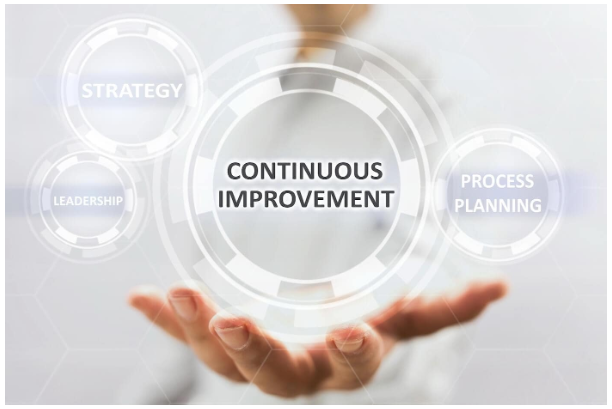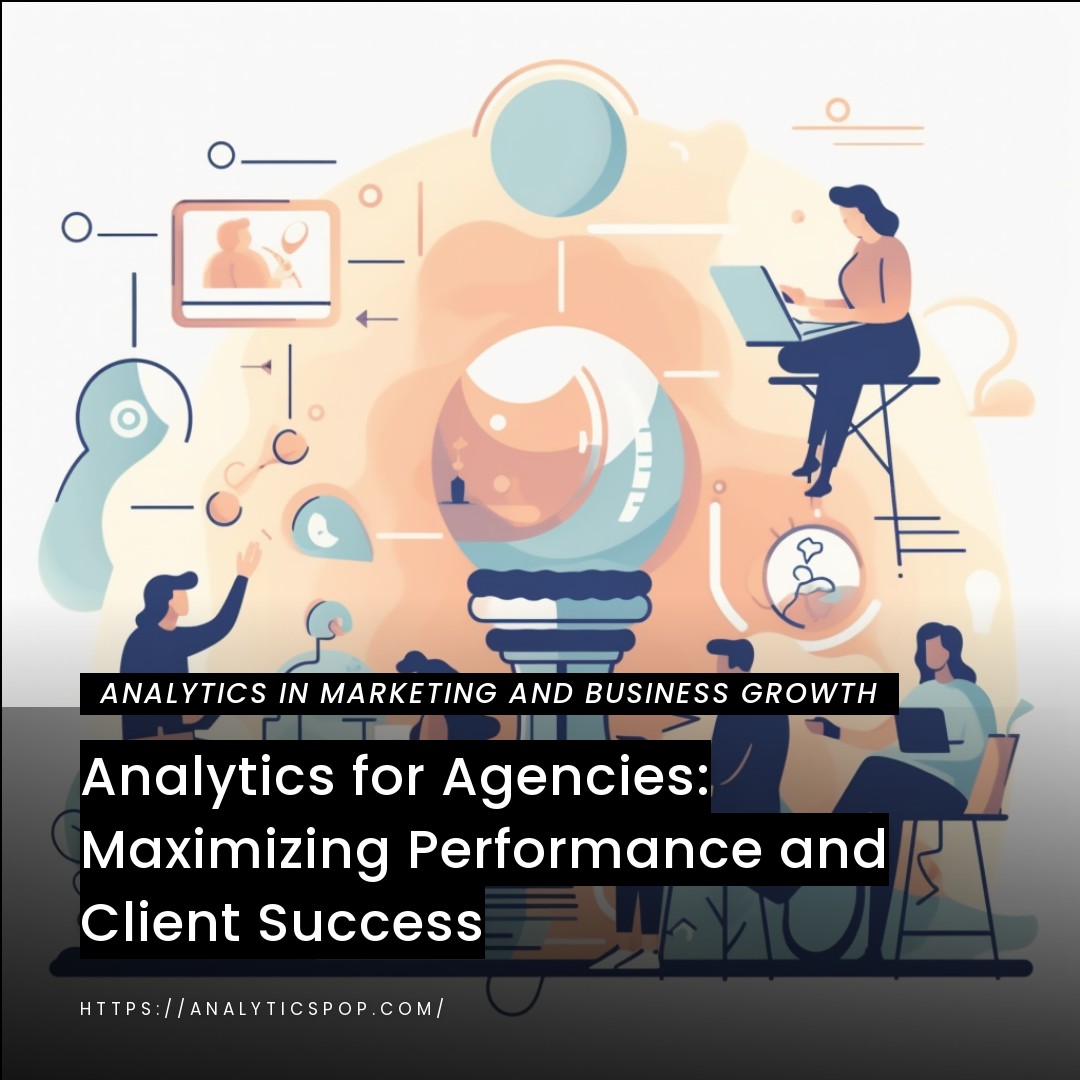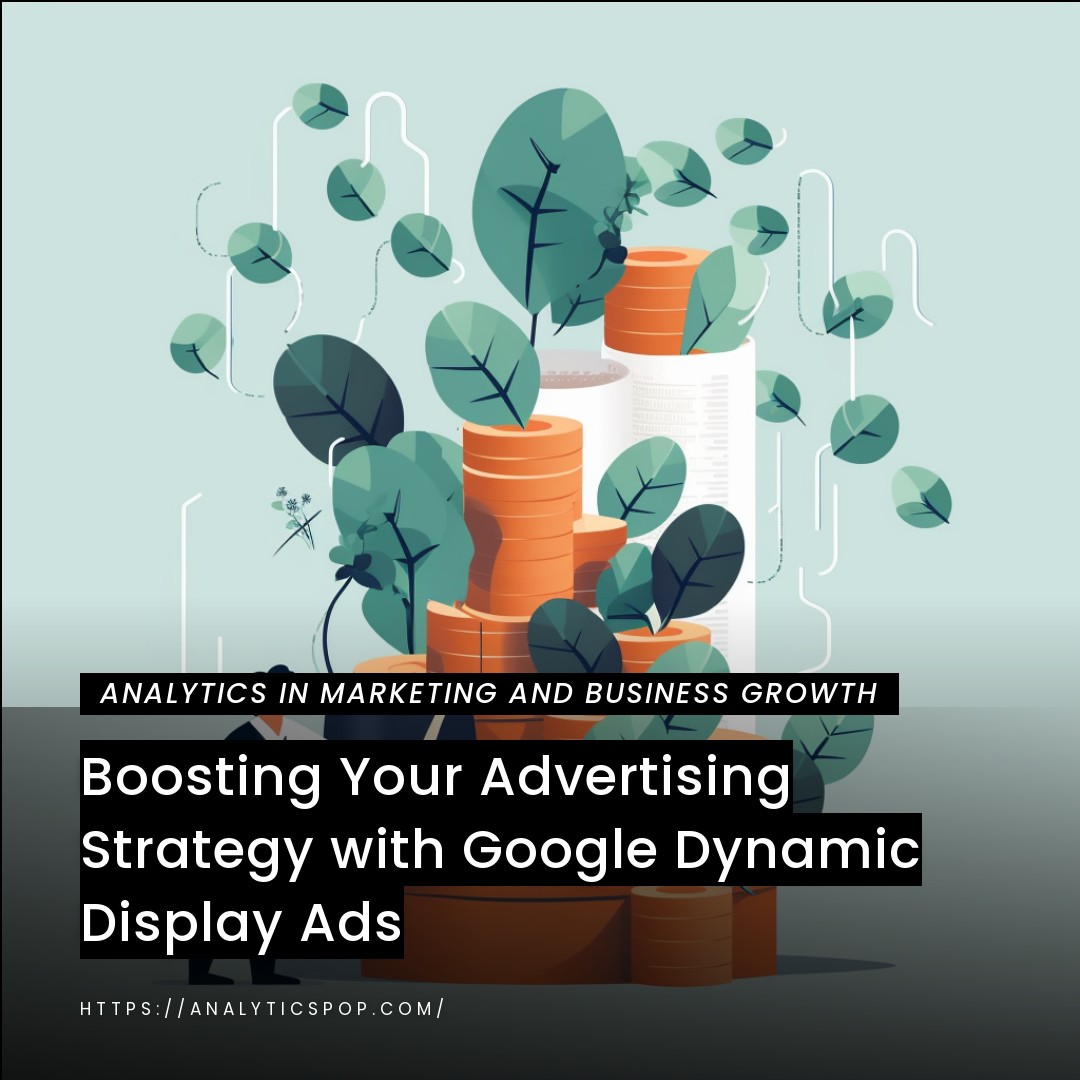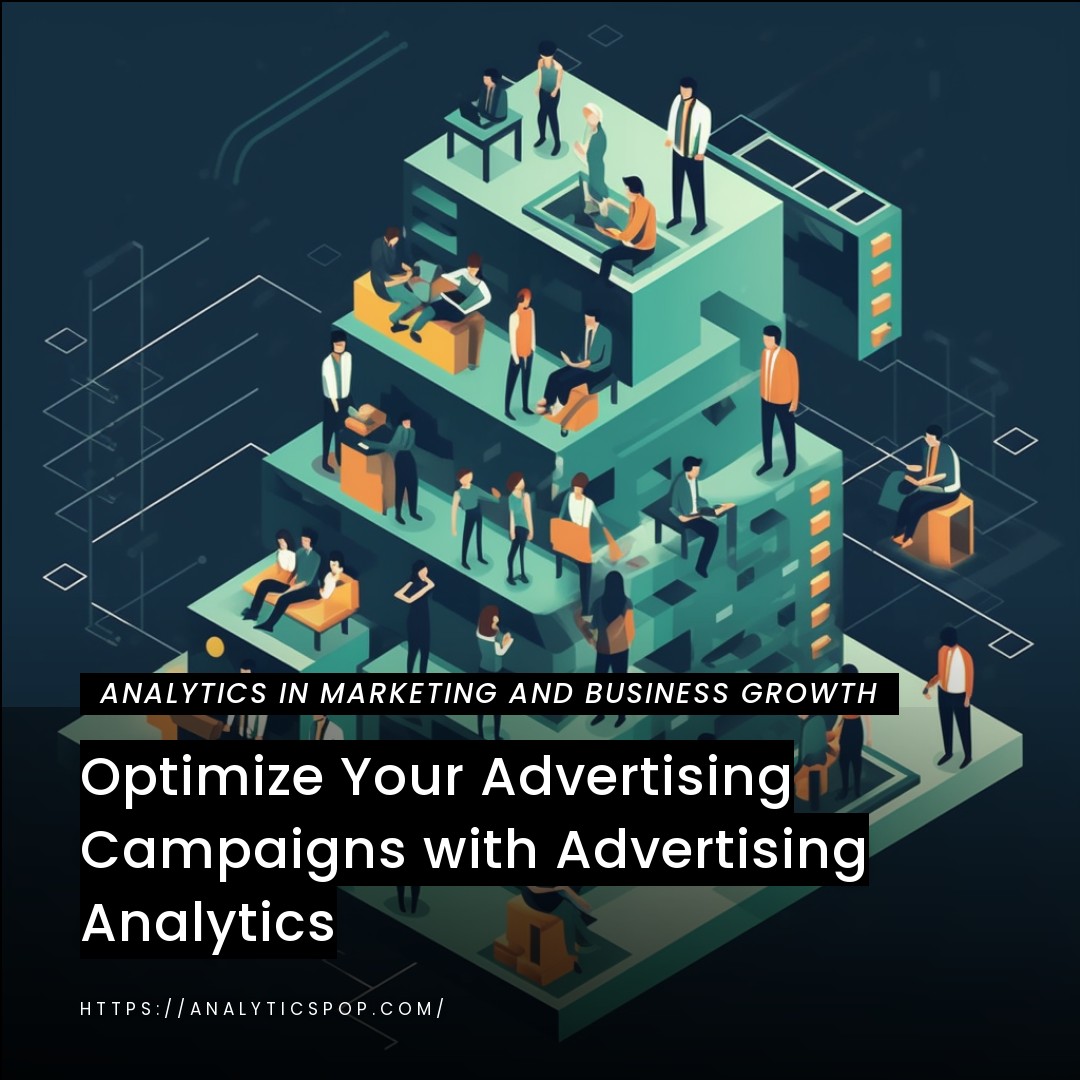Analytics for Agencies: Unlocking Performance and Driving Client Success
Analytics is pivotal in helping agencies unlock performance and drive client success. By harnessing the power of data, agencies can gain valuable insights to inform their strategies and make data-driven decisions.
One key benefit of analytics for agencies is tracking and measuring performance metrics. By analyzing data, agencies can determine which marketing channels drive the most traffic, leads, and client conversions. They can identify patterns and trends, allowing them to optimize campaigns and allocate resources effectively.
Moreover, analytics enables agencies to understand their target audience better. By analyzing demographic data, user behavior, and preferences, agencies can tailor their marketing messages to resonate with their client’s customers. This leads to higher engagement, increased brand loyalty, and improved client success.
Analytics also empowers agencies to identify areas of improvement and make data-backed recommendations. By monitoring key performance indicators (KPIs), agencies can pinpoint underperforming campaigns or channels and implement necessary changes. For instance, if analytics reveal a high bounce rate on a client’s website, agencies can identify the cause and suggest improvements to enhance user experience and drive conversions.
Analytics is crucial for agencies to unlock performance and drive client success. By leveraging data to gain insights, agencies can optimize their strategies, understand their target audience, and identify areas for improvement. Embracing analytics can lead to more effective campaigns, higher client satisfaction, and long-term business growth.
Overview of the significance of analytics for agencies in delivering superior client services
Analytics plays a significant role in enabling agencies to deliver superior client services. By leveraging the power of data-driven insights, agencies can enhance their understanding of client needs, optimize strategies, and achieve exceptional results.
Firstly, analytics allows agencies to gain deep insights into client performance. By analyzing data across various channels and touchpoints, agencies can track and measure key performance indicators (KPIs) relevant to their client’s objectives. This data-driven approach provides agencies with a comprehensive understanding of what is working and what needs improvement, enabling them to make informed decisions and drive better outcomes.
Secondly, analytics facilitates accurate and transparent reporting. Agencies can generate customized reports that showcase the impact of their efforts, providing clients with a clear view of the value they are receiving. Through detailed analytics reports, agencies can demonstrate their strategies’ return on investment (ROI), highlighting the specific metrics and milestones achieved. This transparency builds trust and confidence, fostering stronger client-agency relationships.
Furthermore, analytics enables agencies to uncover actionable insights that drive strategy optimization. By examining data on consumer behavior, market trends, and competitor analysis, agencies can identify new opportunities and refine their approaches accordingly. For instance, analytics might reveal untapped audience segments or highlight content themes that resonate most with the target market. Such insights empower agencies to deliver tailored solutions that align with client’s goals and maximize their success.
Additionally, analytics facilitates continuous improvement and proactive decision-making. By closely monitoring performance metrics and conducting regular data analysis, agencies can identify early warning signs, spot emerging trends, and make real-time adjustments to campaigns. This agility allows agencies to stay ahead of the curve, anticipate client needs, and deliver superior services that drive tangible results.
The significance of analytics for agencies in delivering superior client services cannot be overstated. By leveraging data-driven insights, agencies can comprehensively understand client performance, provide transparent reporting, uncover actionable insights, and continuously optimize strategies. Embracing analytics empowers agencies to deliver exceptional value, exceed client expectations, and foster long-term partnerships.

Importance of data-driven insights in optimizing performance and achieving client success
Data-driven insights play a crucial role in optimizing performance and achieving client success. By harnessing the power of data, agencies can make informed decisions, identify opportunities, and drive meaningful results for their clients.
One of the key benefits of data-driven insights is the ability to measure and track performance accurately. By analyzing relevant data, agencies can evaluate the effectiveness of marketing campaigns, track key performance indicators (KPIs), and identify areas for improvement. This allows them to optimize their strategies, allocate resources wisely, and deliver better outcomes for clients.
Moreover, data-driven insights enable agencies to understand their target audience better. By analyzing customer data, agencies can uncover valuable information about consumer behavior, preferences, and demographics. This knowledge helps tailor marketing messages, optimize content, and deliver personalized experiences that resonate with the intended audience. By connecting with customers on a deeper level, agencies can drive higher engagement, conversion rates, and, ultimately, client success.
Additionally, data-driven insights enable agencies to identify trends and uncover opportunities that might otherwise go unnoticed. By analyzing market data, competitor performance, and consumer trends, agencies can spot emerging opportunities and adjust their strategies accordingly. This proactive approach allows them to stay ahead of the curve, capitalize on market shifts, and provide clients with a competitive edge.
Furthermore, data-driven insights provide a foundation for continuous improvement. By monitoring performance metrics and conducting regular data analysis, agencies can identify bottlenecks, optimize campaigns, and make data-backed client recommendations. This iterative process ensures that strategies evolve and adapt to changing market dynamics, driving sustained client success.
Data-driven insights are instrumental in optimizing performance and achieving client success. Agencies can deliver superior client results by leveraging data to measure performance, understand the target audience, identify trends, and drive continuous improvement. Embracing a data-driven approach enables agencies to make informed decisions, capitalize on opportunities, and stay ahead in an ever-evolving digital landscape.
Key Benefits of Analytics for Agencies
Analytics provides several key benefits for agencies, empowering them to enhance their operations, drive client success, and gain a competitive edge. Here are some of the key advantages of leveraging analytics:
- Data-driven decision-making: Analytics allows agencies to make informed decisions based on data insights rather than assumptions or guesswork. By analyzing data, agencies can identify patterns, trends, and correlations, enabling them to develop effective strategies and allocate resources optimally.
- Performance tracking and optimization: Analytics enables agencies to track and measure the performance of marketing campaigns, channels, and initiatives. By monitoring key performance indicators (KPIs), agencies can identify areas for improvement, optimize their efforts, and maximize ROI. This iterative process helps in refining strategies to achieve better results over time.
- Audience understanding and targeting: Analytics provides agencies valuable insights into the target audience. By analyzing demographic data, user behavior, and preferences, agencies can gain a deep understanding of their client’s customers. This knowledge allows them to create personalized, targeted campaigns that resonate with the intended audience, resulting in higher engagement and conversions.
- ROI measurement and reporting: Analytics helps agencies demonstrate the impact of their efforts by measuring the return on investment (ROI) for their clients. By tracking conversion rates, customer acquisition costs, and revenue generated, agencies can provide transparent and compelling reports showcasing their value. This strengthens client relationships and builds trust.
- Proactive problem-solving and opportunity identification: Analytics empowers agencies to address challenges and seize opportunities proactively. By monitoring real-time data, agencies can identify issues early on, make data-backed recommendations, and take corrective actions swiftly. Additionally, analytics helps agencies uncover new market trends, emerging opportunities, and potential areas for expansion, enabling them to stay ahead of the competition.
- Enhanced client insights and communication: Analytics enables agencies to gain deeper insights into their clients’ businesses. By analyzing data related to customer behavior, market trends, and competitive analysis, agencies can provide valuable insights and strategic recommendations to their clients. This strengthens the client-agency partnership and positions agencies as trusted advisors.
Leveraging analytics provides agencies with various benefits, including data-driven decision-making, performance tracking, and optimization, audience understanding and targeting, ROI measurement and reporting, proactive problem-solving, and enhanced client insights. By harnessing the power of analytics, agencies can drive client success, improve their own operations, and deliver impactful results.

Exploration of the advantages agencies gain from leveraging analytics in their operations
Agencies can gain numerous advantages by leveraging analytics in their operations. Here are some key benefits they can experience:
- Enhanced Decision-Making: Analytics empowers agencies to make data-driven decisions. Agencies can gain valuable insights into consumer behavior, market trends, and campaign performance by analyzing relevant data. These insights enable agencies to make informed decisions, optimize strategies, and allocate resources effectively, resulting in better client outcomes.
- Improved Campaign Performance: Analytics allows agencies to track and measure the performance of marketing campaigns in real time. By monitoring key performance indicators (KPIs) such as click-through rates, conversion rates, and engagement metrics, agencies can identify which campaigns are most effective and which need improvement. This data-driven approach enables them to optimize campaigns, make necessary adjustments, and achieve better results for their clients.
- Targeted Audience Engagement: Analytics helps agencies understand their target audience better. By analyzing demographics, preferences, and behavior data, agencies can develop accurate buyer personas and create highly targeted marketing strategies. This leads to more personalized and relevant campaigns, increasing audience engagement, higher conversion rates, and improved client satisfaction.
- Effective Resource Allocation: Analytics gives agencies insights into the performance and ROI of various marketing channels and tactics. By analyzing cost per acquisition, customer lifetime value, and attribution data, agencies can allocate their resources more effectively. This allows them to invest in the channels and strategies that yield the best results, optimizing their budget and maximizing client success.
- Proactive Problem-Solving: Analytics enables agencies to identify and address issues early on. By monitoring data in real time, agencies can spot anomalies, detect performance bottlenecks, and take proactive measures to resolve them. This helps in minimizing the impact of potential challenges and maintaining campaign effectiveness.
- Client Reporting and Transparency: Analytics allows agencies to generate comprehensive and transparent client reports. These reports showcase the impact of marketing efforts, key metrics, and progress toward goals. By providing clear and data-driven reports, agencies can demonstrate their delivery value, foster trust, and strengthen client relationships.
- Competitive Advantage: By leveraging analytics, agencies gain a competitive edge in the market. They can uncover market trends, competitive insights, and new opportunities their clients can capitalize on. This positions agencies as strategic partners, enabling them to provide valuable recommendations and guidance, ultimately leading to client success.
Leveraging analytics in their operations provides agencies with numerous advantages. These include enhanced decision-making, improved campaign performance, targeted audience engagement, effective resource allocation, proactive problem-solving, client reporting and transparency, and a competitive advantage in the market. By harnessing the power of analytics, agencies can drive better results, exceed client expectations, and differentiate themselves in a competitive landscape.
Improved decision-making, enhanced campaign performance, and client satisfaction
Leveraging analytics in their operations enables agencies to experience improved decision-making, enhanced campaign performance, and increased client satisfaction. Here’s how each of these areas benefits from analytics:
- Improved Decision-Making: Analytics provides agencies with data-driven insights that support informed decision-making. By analyzing relevant data, agencies can better understand their target audience, market trends, and campaign performance. These insights help agencies make strategic choices regarding campaign strategies, channel selection, and resource allocation. With analytics-driven decision-making, agencies can mitigate risks, optimize their approach, and align their efforts with client goals.
- Enhanced Campaign Performance: Analytics plays a crucial role in optimizing campaign performance. By tracking key performance indicators (KPIs) such as conversion rates, click-through rates, and engagement metrics, agencies can measure the effectiveness of their campaigns. Analytics enables agencies to identify areas for improvement, adjust strategies in real-time, and optimize campaigns to achieve better results. Continuous monitoring and analysis of campaign data ensure that agencies can make data-backed optimizations and drive higher client performance.
- Increased Client Satisfaction: Analytics helps agencies deliver better results, leading to increased client satisfaction. By leveraging data insights, agencies can fine-tune their strategies, target the right audience, and deliver personalized experiences. Analytics enables agencies to understand client preferences, measure the impact of their efforts, and provide transparent reporting on campaign performance. With data-driven optimizations and clear reporting, agencies can demonstrate their value, meet client expectations, and foster long-lasting partnerships.
Leveraging analytics brings improved decision-making, enhanced campaign performance, and increased agency satisfaction. By utilizing data-driven insights, agencies can make informed decisions, optimize campaigns, and deliver results that align with client goals. This leads to better performance, higher client satisfaction, and strengthened agency-client relationships.

Essential Analytics Tools and Techniques
Agencies can utilize several essential analytics tools and techniques to gain insights and drive data-driven decision-making. Here are some key ones:
- Web Analytics Tools: Web analytics tools like Google Analytics, Adobe Analytics, or Matomo (formerly Piwik) are crucial for tracking and analyzing website data. These tools provide detailed information on website traffic, user behavior, conversion rates, and other key metrics. By analyzing this data, agencies can understand user journeys, identify bottlenecks, and optimize website performance.
- Social Media Analytics: Social media platforms offer built-in analytics tools (e.g., Facebook Insights, Twitter Analytics) that provide valuable data on audience engagement, post reach, and demographics. Agencies can leverage these tools to measure the effectiveness of social media campaigns, identify popular content, and tailor their strategies to maximize audience engagement.
- SEO Analytics: tools like Moz, SEMrush, or Ahrefs help agencies analyze website performance in search engine results. These tools provide insights into keyword rankings, backlinks, organic traffic, and competition analysis. By monitoring SEO metrics, agencies can optimize website content, identify opportunities to improve search rankings and drive organic traffic growth.
- Data Visualization Tools: Tools like Tableau, Power BI, or Google Data Studio enable agencies to visualize and present data effectively. These tools allow for creation of interactive dashboards, charts, and graphs that make complex data more accessible and understandable. Data visualization aids in identifying patterns, trends, and actionable insights quickly.
- A/B Testing: A/B testing is a technique that allows agencies to compare two or more versions of a webpage, email, or ad to determine which performs better. By systematically testing variables such as headlines, layouts, or call-to-action buttons, agencies can make data-informed decisions and optimize their campaigns for improved results.
- Predictive Analytics: Predictive analytics uses historical data and statistical algorithms to forecast future outcomes and trends. Agencies can employ predictive modeling techniques to anticipate customer behavior, identify potential risks, and make proactive decisions. Predictive analytics helps agencies optimize marketing strategies, target specific customer segments, and improve campaign ROI.
- Customer Segmentation: Customer segmentation involves dividing a target audience into distinct groups based on shared characteristics or behaviors. By employing segmentation techniques, agencies can tailor their marketing messages, personalize content, and deliver targeted campaigns that resonate with different customer segments. This approach enhances engagement and improves overall campaign effectiveness.
These are just a few essential analytics tools and techniques agencies can leverage to gain valuable insights and drive data-driven decision-making. Each tool and technique serves a specific purpose, and agencies should choose the ones that align with their objectives and client needs.
Leveraging Analytics for Campaign Optimization
Leveraging analytics for campaign optimization is a powerful strategy that can significantly improve the effectiveness and ROI of marketing campaigns. Here’s how agencies can utilize analytics to optimize their campaigns:
- Set Clear Goals and KPIs: Before launching a campaign, it’s essential to establish clear goals and key performance indicators (KPIs). These goals include increasing website traffic, boosting conversions, or improving brand awareness. By defining measurable objectives, agencies can track progress and evaluate campaign success accurately.
- Track and Measure Data: Analytics tools enable agencies to track and measure various campaign metrics, such as website traffic, click-through rates, conversion rates, and engagement. By monitoring these data points, agencies can gain insights into how the campaign is performing, identify areas for improvement, and make data-driven optimizations.
- Analyze Audience Behavior: Analytics provides valuable insights into audience behavior, including demographic data, user journeys, and engagement patterns. By understanding how audiences interact with campaign content, agencies can identify which elements resonate most with the target audience and make data-informed decisions about content optimization.
- Conduct A/B Testing: A/B testing involves comparing two or more versions of a campaign element (e.g., email subject lines, ad copy, landing page designs) to determine which performs better. By running controlled experiments and analyzing the results, agencies can identify the most effective variations and refine campaign elements for maximum impact.
- Optimize Channel Performance: Analytics allows agencies to evaluate the performance of different marketing channels, such as social media, email marketing, or paid advertising. By analyzing channel-specific data, agencies can identify which channels drive the most engagement, conversions, and ROI. This information enables them to allocate resources effectively and optimize channel selection for better campaign outcomes.
- Real-Time Monitoring and Adjustments: Analytics tools provide real-time data, allowing agencies to monitor campaign performance continuously. Agencies can promptly detect underperforming elements or unexpected trends by closely monitoring campaign metrics. This enables them to make real-time adjustments and optimize campaigns on the fly, maximizing results and minimizing wasted resources.
- Iterative Optimization: Optimization is an iterative process involving continuous improvements based on data insights. By analyzing campaign performance, identifying areas for improvement, and implementing optimizations, agencies can refine their strategies and achieve better results with each iteration. Regularly reviewing and updating campaign elements based on analytics data ensures ongoing optimization and success.
Leveraging analytics for campaign optimization empowers agencies to make data-driven decisions, understand audience behavior, conduct experiments, and continuously refine their strategies. By utilizing the power of analytics, agencies can optimize campaigns for better performance, increase conversions, and, ultimately, drive superior results for their clients.

Client Reporting and Communication
Client reporting and communication are essential components of agency-client relationships. Analytics can greatly enhance these aspects by providing data-driven insights and facilitating transparent and effective communication. Here’s how agencies can leverage analytics for client reporting and communication:
- Data-Driven Reports: Analytics tools allow agencies to generate comprehensive reports that showcase the performance of marketing campaigns. These reports provide clients with clear and measurable metrics, such as website traffic, conversions, engagement rates, and ROI. By presenting data-driven reports, agencies can demonstrate the impact of their efforts, aligning client expectations with actual results.
- Customized Dashboards: Analytics platforms often offer customizable dashboards that provide real-time data visualization. Agencies can create tailored dashboards highlighting key metrics and trends relevant to each client. These interactive dashboards enable clients to access up-to-date information, monitor progress, and gain insights into campaign performance at their convenience.
- Performance Reviews: Regular performance reviews with clients can leverage analytics to dive deeper into the data and discuss key insights. Agencies can review campaign metrics, identify successful strategies, and pinpoint areas for improvement. These discussions foster collaboration, enable the client to provide feedback, and allow the agency to make data-driven recommendations for future optimizations.
- Explaining Data and Insights: Analytics can help agencies effectively communicate complex data and insights to clients. By providing clear explanations, visualizations, and comparisons, agencies can make data more accessible and understandable to clients who may not have a strong analytics background. This facilitates productive discussions and ensures clients grasp the value and impact of the analytics insights.
- Client Workshops and Training: Agencies can offer workshops or training sessions to educate clients on analytics tools, metrics, and the interpretation of data. By empowering clients with the knowledge and skills to navigate analytics platforms, agencies foster collaboration and enable clients to engage with the data actively. This ensures that clients can independently access and interpret analytics insights for their benefit.
- Insights-Driven Recommendations: Analytics enables agencies to derive actionable insights from data. By analyzing trends, identifying patterns, and interpreting the data, agencies can provide valuable recommendations to clients. These insights-driven recommendations help clients understand the implications of the data and make informed decisions to optimize their marketing strategies.
- Proactive Communication: Analytics proactively allows agencies to communicate with clients based on data-driven insights. Agencies can share updates on campaign performance, highlight emerging trends, and provide recommendations for optimization. This proactive communication strengthens the agency-client relationship, instills confidence, and positions the agency as a trusted advisor.
Leveraging analytics in client reporting and communication empowers agencies to provide transparent, data-driven insights to their clients. By customizing reports, using interactive dashboards, conducting performance reviews, explaining data effectively, offering client training, providing insights-driven recommendations, and fostering proactive communication, agencies can enhance the client experience, drive mutual understanding, and achieve client satisfaction.
Data Privacy and Security Considerations
Data privacy and security considerations are of utmost importance when leveraging analytics. Agencies must ensure that they handle and protect client data responsibly and securely. Here are some key considerations:
- Data Protection Regulations: Familiarize yourself with applicable data protection regulations such as the General Data Protection Regulation (GDPR) or the California Consumer Privacy Act (CCPA). Understand your obligations as an agency in handling and processing client data to ensure compliance.
- Consent and Transparency: Obtain appropriate consent from clients before collecting and using their data. Communicate how their data will be used, the purposes for which it will be processed, and any third parties involved. Provide transparency about data collection methods, storage, and security practices.
- Data Minimization: Collect only the necessary data to achieve the agreed-upon objectives. Avoid excessive or unnecessary data collection to minimize privacy risks and potential breaches. Use anonymization or pseudonymization techniques when possible to further protect personal information.
- Data Security Measures: Implement robust data security measures to safeguard client data. This includes secure data storage, encryption of sensitive information, access controls, and regular security audits. Maintain up-to-date software and infrastructure to protect against vulnerabilities and potential breaches.
- Data Sharing and Third Parties: If data is shared with third-party vendors or partners, ensure appropriate data protection measures are in place. Implement data processing agreements or contracts that define responsibilities and enforce data privacy and security requirements.
- Data Retention and Disposal: Establish clear policies for data retention and disposal. Retain data only for as long as necessary to fulfill the intended purposes and comply with legal obligations. Securely dispose of data when it is no longer needed, following proper data destruction protocols.
- Employee Training and Awareness: Educate agency staff about data privacy and security best practices. Train employees on data handling procedures, confidentiality, and protecting client data. Foster a culture of data privacy awareness within the agency.
- Regular Audits and Compliance Checks: Conduct regular audits to assess data privacy and security requirements compliance. Review and update policies and procedures to adapt to evolving regulations and industry best practices.
- Incident Response Plan: Develop an incident response plan to promptly address potential data breaches or security incidents. Define roles and responsibilities, establish communication protocols, and implement measures to mitigate the impact of any security breaches.
By prioritizing data privacy and security considerations, agencies can build trust with clients, protect sensitive information, and ensure compliance with regulations. Maintaining a strong focus on data protection helps safeguard client data and supports responsible and ethical analytics practices.

Continuous Improvement and Stay Ahead
Continuous improvement and staying ahead are vital for agencies to remain competitive and deliver exceptional results. Here are some key strategies to achieve continuous improvement and stay ahead:
- Monitor Industry Trends: Stay informed about industry trends, technological advancements, and emerging marketing strategies. Regularly follow industry publications, attend conferences, and participate in relevant webinars to keep up with the evolving landscape. This knowledge enables agencies to adapt their strategies, incorporate innovative approaches, and stay ahead of the competition.
- Embrace Data-Driven Insights: Leverage analytics and data-driven insights to identify areas for improvement and optimize campaign performance. Regularly analyze key metrics, identify patterns and trends, and make data-informed decisions. Continuously optimize campaigns based on insights gained, refining targeting, messaging, and strategies to achieve better results over time.
- Foster a Culture of Learning: Encourage continuous learning and professional development within the agency. Provide opportunities for employees to enhance their skills through training, certifications, workshops, or industry-specific courses. Encourage knowledge sharing and collaboration among team members to foster a culture of continuous improvement and innovation.
- Implement Agile Methodologies: Embrace agile methodologies in campaign management and project execution. Break down projects into smaller, manageable tasks with defined timelines, allowing for flexibility and quick iterations. Regularly review and adapt strategies based on performance data and client feedback, enabling agencies to respond swiftly to changes and optimize outcomes.
- Client Feedback and Collaboration: Actively seek client feedback and involve them in the campaign optimization process. Regularly communicate openly and transparently with clients to understand their evolving needs, preferences, and challenges. Collaborate with clients to refine strategies, make necessary adjustments, and align efforts to deliver superior results.
- Experiment and Test: Encourage a culture of experimentation and testing. Implement A/B testing, pilot projects, or new technologies to explore innovative ideas and identify what works best for clients. Learn from successes and failures and use these insights to refine strategies and drive continuous improvement.
- Competitive Analysis: Conduct regular competitive analysis to stay informed about industry benchmarks, competitor strategies, and market trends. Identify areas where competitors are excelling and seek opportunities to differentiate agency offerings. Use this information to enhance agency capabilities and position yourself as a leader in the industry.
- Embrace Technology and Automation: Embrace technology and leverage automation tools to streamline processes, improve efficiency, and save time for strategic tasks. Adopt marketing automation, project management software, or analytics platforms that enhance productivity and enable agencies to focus on value-added activities.
- Evaluate and Adapt: Continuously evaluate agency processes, methodologies, and client outcomes. Assess the effectiveness of internal workflows, identify bottlenecks, and implement improvements. Regularly review client satisfaction levels and seek feedback to ensure services are aligned with client expectations.
By embracing a mindset of continuous improvement, staying informed about industry trends, leveraging data-driven insights, fostering a learning culture, and collaborating closely with clients, agencies can stay ahead of the curve, deliver exceptional results, and maintain a competitive edge in the dynamic marketing landscape.



